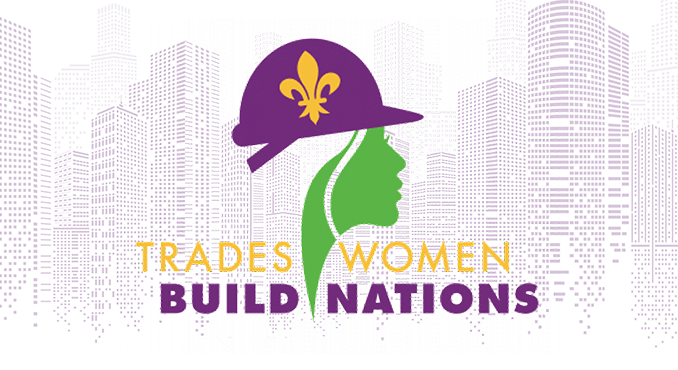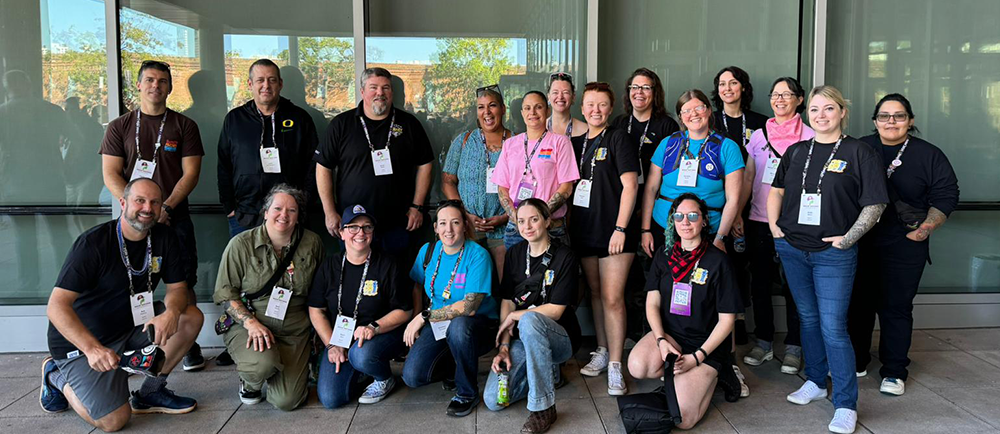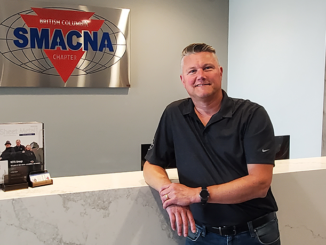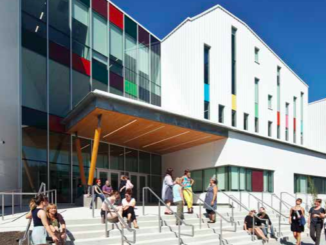
By / Jessica Kirby • Photos submitted by Andy Del Toro
Tradespeople, union leadership, and contractors gather yearly at Tradeswomen Build Nations (TWBN)—the largest gathering of tradeswomen in the world. Hosted by North America’s Building Trades Unions (NABTU), the annual event brings more than 3,000 trades industry representatives together, representing the United States and Canada.

The three-day conference features formal plenary sessions, a banner parade, and over a dozen workshops on a range of topics addressing unique and critical issues of tradeswomen in the workforce.
“The impact of TWBN and its exponential growth are phenomenal,” said NABTU President Sean McGarvey. “There is nowhere on the planet where more building trades members gather each year than at this conference, and this year, almost every general president in the building trades attended.”
The sheet metal industry represents well. Union and contractor members from across the United States and Canada make appoint of attending, and the numbers grow each year.
In 2024, SMACNA Oregon & Southwest Washington, Local 16, and the Sheet Metal Institute jointly sponsored eleven women to attend TWBN.
“We are proud to have co-sponsored these local tradespeople to attend the Tradeswomen Build Nations conference,” says Chris Schneider, executive director for SMACNA Oregon & SW Washington. “If people sharing common interests are encouraged to come together and speak openly, they can build lasting support networks, and we can improve by learning from their experiences.”
One of those tradespersons is Andy Del Toro, a second-year apprentice at Southland Industries in Portland. She attended in 2024 for the first time and felt the opportunity was too good to pass up. That was partially because she’d never been east of Arizona but mostly because it was a chance to delve deeper into the industry she cares so much about.

“It might sound corny, but I love my career and my union so much,” she says. “I’ve always worked so hard at all the jobs I’ve had, and while I’d received raises and leadership roles in the past, my hard work had mostly gotten other people promotions—and I still had to work two jobs to support myself.”
Del Toro says TWBN was a wonderful opportunity to see and support other women’s journeys in the trades. Highlights for her included the Indigenous keynote speakers, hearing women’s experiences within their careers, and having dinner with her union family.
“It was so wonderful to trade stickers, shirts, and stories with women from all over the country,” she says. “Some women talked about how they rose to leadership roles after being told that they would fail, some were proud that they could support their multigenerational families with their careers, and some shared how harshly they were being treated by their brothers in the trades.
“Offering support and solidarity was very fulfilling. It made me feel even more grateful to my shop and my union, because I’m treated fairly and work with people who are now my friends, too.”
She says anyone thinking about attending should jump at the chance. “The true advice that I have for this conference is to treat it like work, but the task is to observe and connect with people,” she says. “Hear and remember as many stories as you can, and don’t be shy. There were many women who I wanted to ask for their IGs but I was too shy. I also wish I had bought some of our Local 16 shirts to trade with other SMART members!”
Angie Simon, past SMACNA National president, has attended in the past and says she was most impressed by how many allies (male supporters) attend the event. What Simon has heard from the men who attended is that TWBN is eye opening.
“They heard stories and attended panel discussions that made them even more aware of what their female sisters have had to endure being the only women on a jobsite,” she says. “So, for their awareness, it is excellent that they attend. For the women, it is a chance to celebrate their success, not feel so alone, and bond and network with other women working in the trade. Plus, the educational content is solid.”
Besides gender equality, many important issues take center stage at TWBN, and it is the perfect forum for discussion on these topics. One key takeaway is that bullying and harassment, unfortunately, exist in many workplaces, especially for women and apprentices in trades. In many cases, co-workers are bystanders to bullying and do nothing to help or deflect because they themselves are afraid of retaliation.
‘Silence is compliance’ was a phrase that stood out to me,” Simon says. “We as tradespeople need to work on how we treat each other because times have changed, and this is not a man’s job or a woman’s job. This is our job.”
Learn more about Tradeswomen Build Nations and view photos and materials from past conferences at nabtu.org/twbn
Mark your calendars for Tradeswomen Build Nations 2025 when the dates and location are announced. ■



